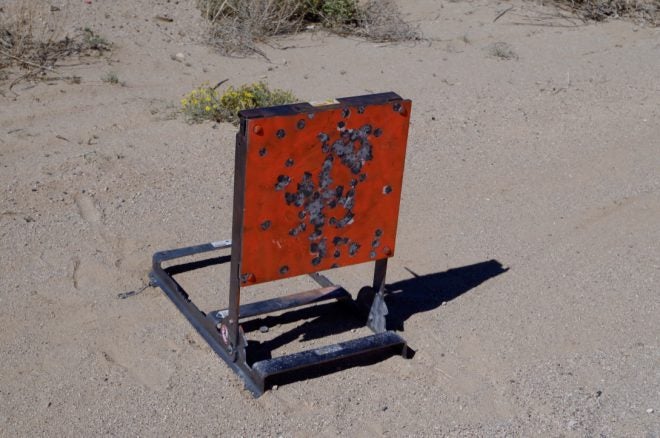One of the great things about being a writer for a blog like The Firearm Blog is getting the opportunity to play with a number of products. I’ve had the pleasure of reviewing other target systems (live fire systems like Auto Targets, and dry fire ones like the Atlas 8). My latest target system is the Pacifica from Mason Target Systems.
Construction and Design
The Pacifica is a pretty simple target. Basically is an eighteen inch square of 3/8 inch AR500 steel. It is attached to a scaffold and has sensors bolted to the back side of the plate in each corner. Each sensor has a length of coaxial cable that attaches to a “target computer” which is a housing that includes some electronics and an antenna. That “target computer” pairs to a “base station” that also hosts a network to which you can attach an iPad running the Mason Target System app (currently one target running at a time on the app).
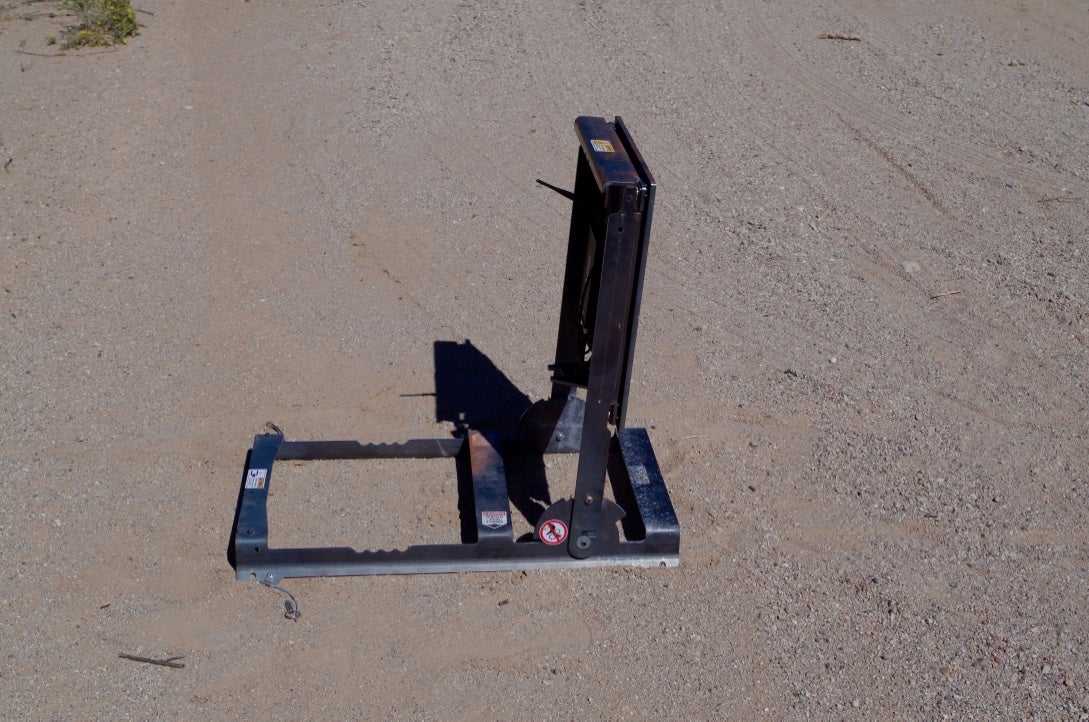
The target can be angled in several positions as needed and to reduce spall.
The target itself, and the scaffold, can be mounted on a portable frame with wheels, hung on a 2×4 using an optional support piece, or attached to other supports in any number of other ways.
Mason Target Systems boasts a communication range of two miles between the base station and target computer.
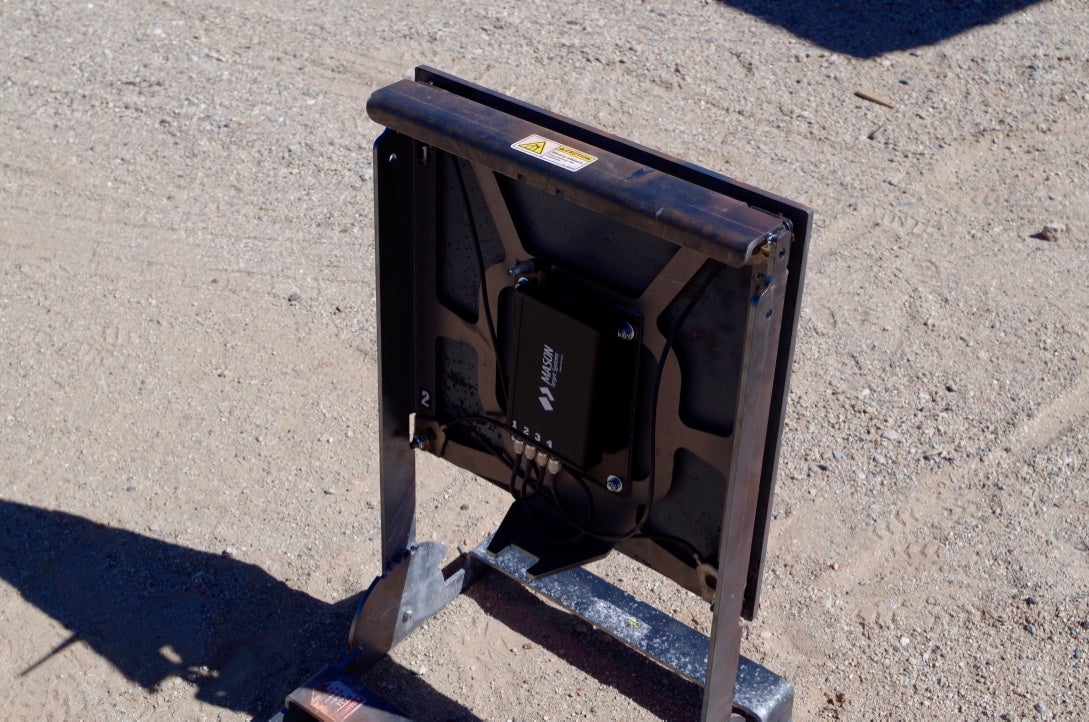
The computer and sensor cables are well protected behind the target steel.
Both the target computer and base station have internal rechargeable batteries, which you recharge using a USB cable. The target computer attaches to the back side of the scaffold via hook and loop.
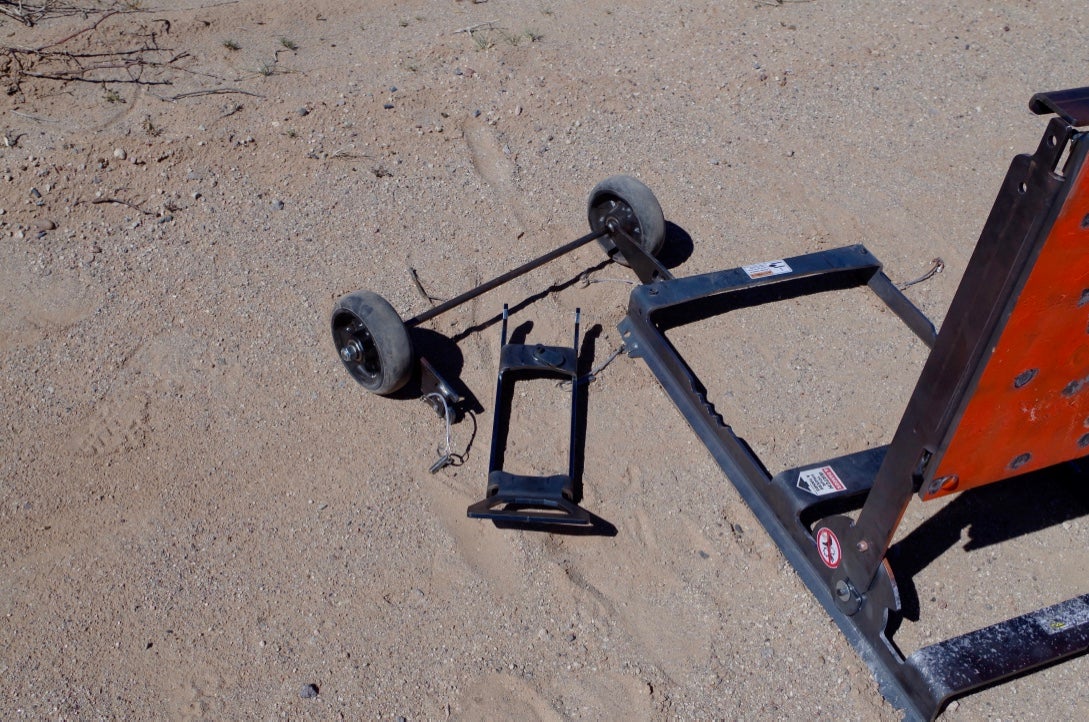
Wheel and handle attachments to make transport a little easier.
It is a solid piece of equipment–the target on the portable frame weighed in at a stout 110 pounds (give or take a few). The removable wheels and handle were definitely a boon.
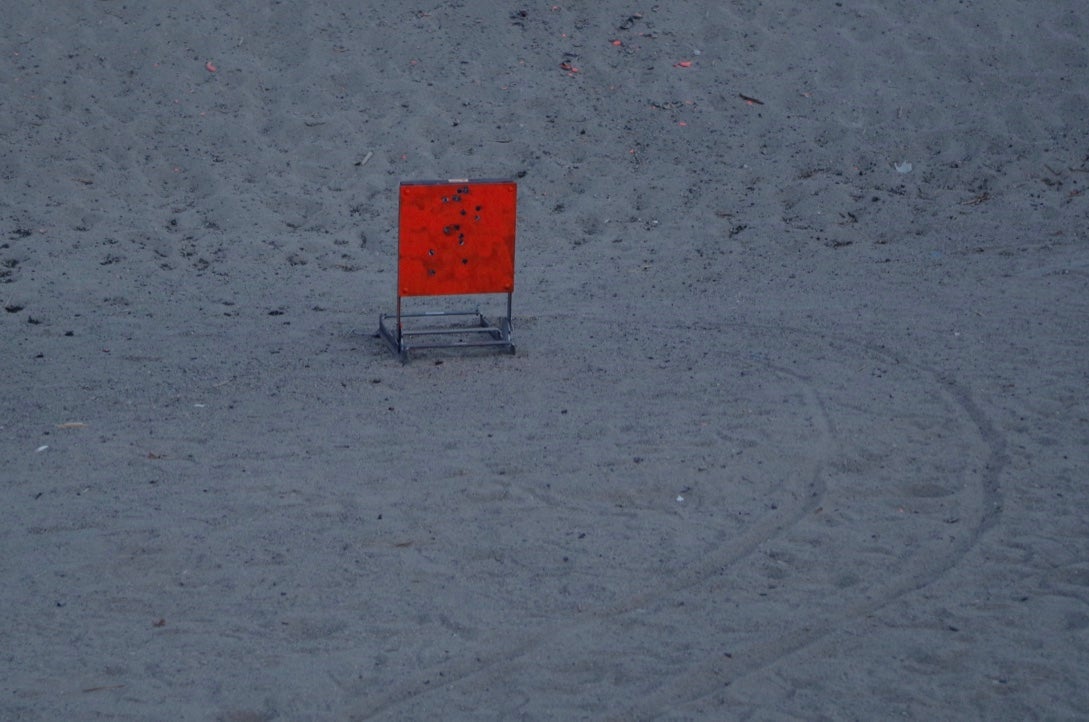
Note the furrows in the ground. 110 pounds is a lot even for the wheels.
It is constructed of AR500 steel (3/8″), so it is capable of withstanding rifle, though, perhaps, 1/2″ would be a bit more optimal (though I don’t know how much that would degrade the ability of the sensors to register impacts).
Observations
Every single shot that the system recorded was dead accurate. Like perfectly so. I was very impressed with that ability. I did however have a problem with the first base station/target computer losing connection, and intermittently not recording impacts. Mason Target Systems shipped me new computers post haste, and I can happily report that the replacement components did not suffer any issues.
I also had a concern about the communication range of the system. It basically uses a 2.4 GHz antenna (like you find on older wifi routers), and that antenna is situated behind a thick steel plate. The concept that makes it work is based on the “fresnel zone” (you can nerd out on that here). If I owned a Mason Target System, I would probably run the antenna a few meters away from the main target and mount it on a post to maximize the range, and eliminate potential interference.
It is advertised as being able to handle pistol, shotgun, and rifle, and it has an enormous advertised range (out to 2 miles–I only tested it to 1000 yards). But there are numerous warnings in the documentation about the longevity of the system when used with rifle.
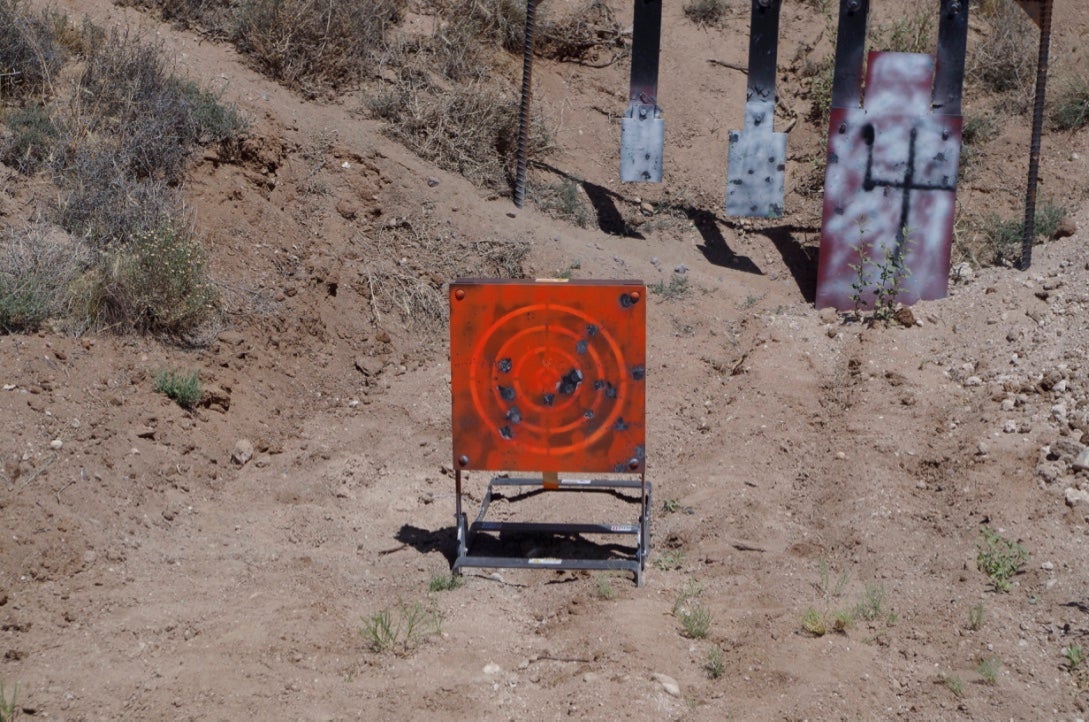
Mason Target Systems at 400 yards.
To me the biggest utility of a system like this is that you can, in fact, record your hits from significant distances. This would have been an awesome system at the Precision Long Range class I recently took at the NRA Whittington Center. Or if I owned enough land, I could set up a system like this to shoot long range without a human spotter.
It is novel and entertaining for defensive pistol shooting, but being steel, you don’t really want to engage in shorter distances (15 yards being the absolute closest I would argue is sane). Another drawback in defensive training with the Pacifica is that it doesn’t register shots faster than a half second–so no hammer pairs, or failure drills.

Screen shot of the iPad app showing the shots and splits. The shots were recorded dead accurately (I didn’t get a pic of the plate showing these shots, as I had been shooting all day on it–the plate was not “fresh”).
I can see the utility for ranges, where having a really durable target with the novel feature of being able to score and track shots would provide entertainment, especially if you can network a number of them together (like for a party or something). And also, after a discussion with Chris, I see a huge utility for zeroing tons of weapons. If you are responsible for zeroing a significant number of weapons (for, say, a department) this would be a huge blessing, and would, I imagine, save a bunch of time (by not having to go down range and replace targets, check impacts, etc).
Mason Target Systems does have a number of variants in the works including one that will allow for rapid fire. It is actually a pretty complex engineering task, I understand, being able to pick out the individual shots. Think of throwing a rock into a pond and measuring how long it takes the sensors to triangulate the position from the ripples. Now throw a handful of gravel in the water… Another variant is a dedicated outdoor, long range system, which should include a larger target plate and weather-safe electronics.
Conclusions
It was definitely fun to shoot, though it also sucked to have to move it around (at 110lbs), between house and range… 😉
It was also great to be able to see the exact impacts on the plate, and the iPad app has the ability to overlay a grid of one inch squares which really helped to rapidly make precise adjustments for my optics.
So the biggest downside to the system is the price. At a price tag of $2500, this is obviously not a system for the casual shooter. Ranges, departments, and those that seriously shoot long range solo are going to be the market that adopts this kind of a system, and I think it would serve any of them well. It is definitely a long term investment, and Mason Target Systems is actively improving the software, as well as innovating variations that will serve other demographics, keeping that investment fresh and adaptable.
You can find more information about this target system at: https://www.masontargetsystems.com/
Disclaimer: Chris Cheung, winner of Top Shot Season 3, and writer for TFB, is an investor in this product. My observations on this product are my own, and not influenced by this relationship.
 Your Privacy Choices
Your Privacy Choices
